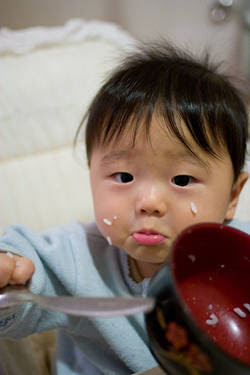Arnel has had a successful music career in the Philippines for 25 years, even before the Journey fame. Like most Filipino singers, he had a humble beginning. Arnel's family acquired deep debt when his mother died. His dad was forced to ask relatives to separate and take his siblings. At this time, Arnel quit school, was sleeping in the streets, and had to work odd jobs like cleaning scrap metal and docked ships, just to be able to strike out on his own.
But even at a young age, his parents instilled in him the love for music. In one interview, he revealed that one of his earlier idols were Barbara Streisand and Karen Carpenter. At 1982, at age 15, Arnel joined a group called Ijos Band. He formed and transferred to several bands since then. A talent agent spotted Pineda and his then group "New Age" and asked them to perform in Hongkong restaurants. Arnel worked in Hongkong for several years thereafter.
Like Charice, Arnel's career was hugely boosted thanks to Youtube. On June 28, 2007, Neal Schon of Journey contacted Noel Gomez, a longtime fan and friend of Pineda who uploaded many of his performance videos, to ask for Pineda's contact information. Schon sent an e-mail to Pineda inviting him to audition for Journey. The rest, as they say, is history. To quote this article:
Chilean media acclaimed Pineda's performance (translated to English): "The new vocalist fit very well with the band, his vocal aptitudes shining through, which are very similar to the legendary musician of the band, Steve Perry."] Journey keyboardist Jonathan Cain described Pineda's performance in a radio interview: "We went to Chile just recently, where we had never played and they went crazy, they absolutely went nuts...Arnel's first show — talk about a stressful thing — we had a televised concert for 25 million people...Is the guy a winner? Yeah, he's a winner. He's a clutch player."
Journey's concerts with Arnel are huge hits. This is a video from his 2008 Las Vegas concert.
This is PinoyTunes The Podcast's feature on Arnel Pineda:
For the latest on Arnel, check out his official blog: http://arnelpinedarocks.com/
Source: Wikipedia





